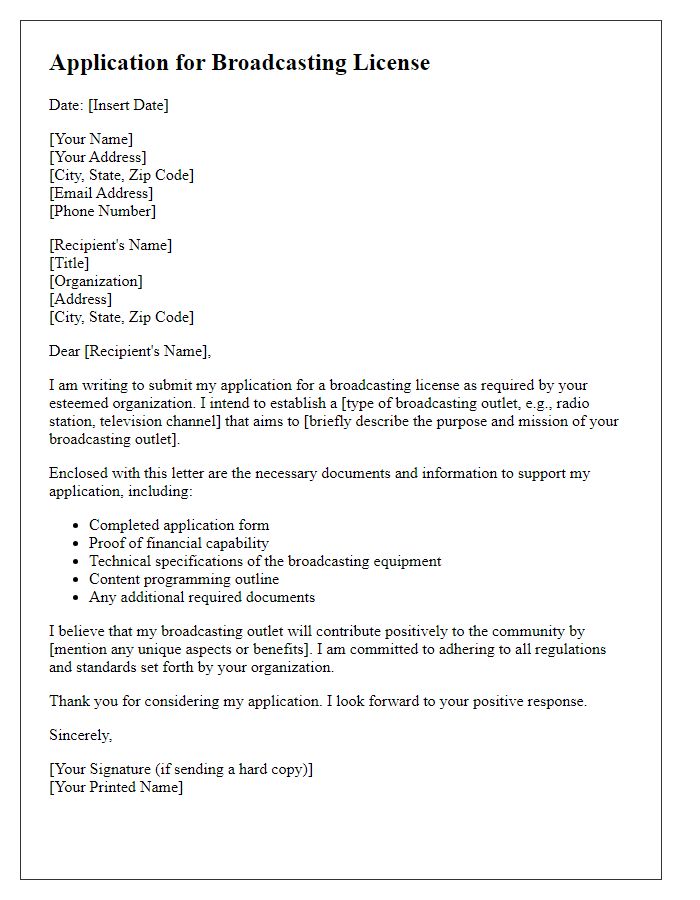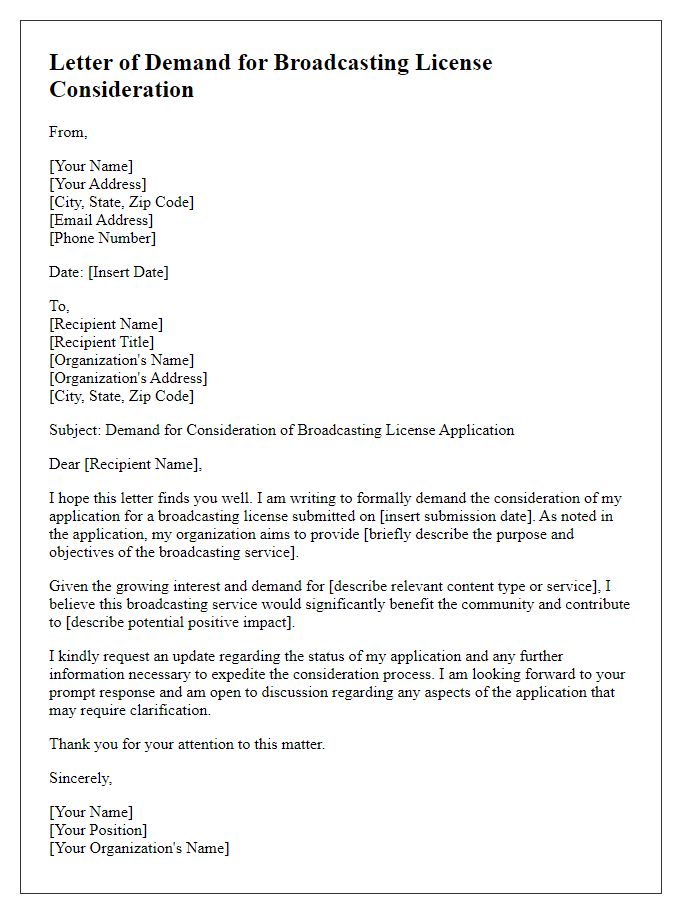Are you considering launching your own broadcasting venture? Obtaining a broadcasting license is a crucial step in ensuring your project meets regulatory standards while reaching your audience effectively. Whether you're looking to start a radio station, TV channel, or online streaming service, understanding the process can be both exciting and daunting. Join us as we dive deeper into the essentials of crafting a compelling letter for your broadcasting license request that stands out!

Introduction and Purpose
A broadcasting license request serves as a formal application to obtain the legal authorization necessary for operating radio or television stations. This document outlines the intent to deliver media content to a designated audience within a specific geographic area. The introduction emphasizes the applicant's commitment to following regulatory standards set forth by governing bodies like the Federal Communications Commission (FCC) in the United States or comparable entities globally. Additionally, it articulates the applicant's mission to provide quality programming, contribute to local news dissemination, and support community engagement through various forms of broadcast media.
Applicant Information
The applicant information for a broadcasting license request must include various key details. First, the legal name of the applicant or organization (e.g., ABC Media Inc.) is required, along with the official business address (such as 123 Broadcasting Lane, Springfield, USA), which ensures accurate correspondence. The contact person should be specified, including their title (e.g., Licensing Coordinator) and contact details like phone number (for example, +1-555-123-4567) and email address (such as licensing@abcmedia.com). Additionally, the applicant must provide the type of broadcasting they are seeking (e.g., FM radio, television, or cable), along with the frequency or channel number if applicable (like 101.5 FM or Channel 5). Finally, the applicant should include the date of the request submission (for instance, October 12, 2023) to establish a timeline for processing.
Technical Specifications
Technical specifications for broadcasting licenses often require detailed information regarding the transmitter power output (TPO), frequency allocation, and modulation type. For instance, a typical FM transmitter might operate at a TPO of 100 watts, broadcasting on a frequency of 101.5 MHz. Antenna type could include a directional antenna with a gain of 6 dBi to enhance signal strength and reach. Compliance with the Federal Communications Commission (FCC) regulations is crucial, necessitating an interference analysis to avoid disruption to nearby frequencies. Additionally, specifications regarding audio processing equipment are important, as they can dictate sound quality, requiring tools such as compressors and limiters for optimal signal clarity. Accurate documentation of these elements is vital for ensuring adherence to broadcast standards and securing the license.
Financial Stability and Funding
Financial stability plays a critical role in securing a broadcasting license, indicating the ability to sustain operations. Investors, such as venture capital firms, often require evidence of a viable business model and sufficient funding, with start-up costs possibly exceeding $500,000 for small to medium-sized broadcasting entities. Detailed financial statements, showcasing assets, liabilities, and income forecasts, form essential parts of the application. Moreover, funding sources may include advertising revenue, sponsorships, and grants from organizations like the Corporation for Public Broadcasting. A solid financial plan can demonstrate commitment to quality programming and community engagement, enhancing the likelihood of obtaining a license.
Compliance and Regulatory Assurance
In the realm of broadcasting, obtaining a license is crucial for ensuring compliance with national regulations, such as the Federal Communications Commission (FCC) guidelines in the United States. This license enables organizations to operate radio and television frequencies legally, permitting access to airwaves for content dissemination. The licensing process involves meticulous documentation, including technical proposals detailing signal strength, coverage area, and interference management. Regulatory bodies assess these submissions to ensure alignment with public interest standards, promoting fair competition and diversity in media. Adherence to these regulations helps maintain a balanced broadcasting landscape, fostering an informed society while safeguarding the rights of both creators and consumers.





















Comments